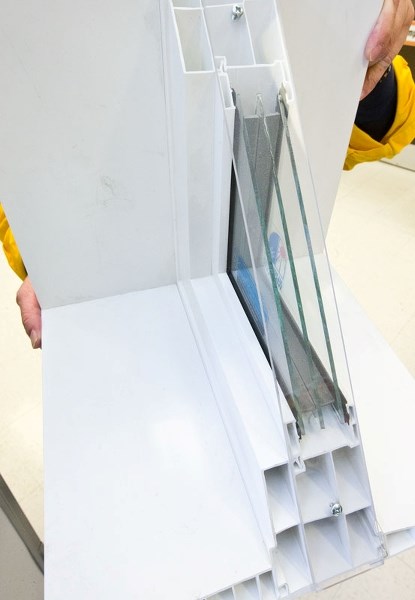Frost-covered windowpanes were a fact of life when I was growing up. Not coincidentally, so was a cold house.
Home heating accounts for about 63 per cent of the energy used in the average Canadian home, reports Natural Resources Canada.
And windows can account for about a quarter of a typical home’s heat loss, notes Peter Amerongen, one of Edmonton’s leading designers of net-zero homes.
“Glass is the least energy efficient part of your house, probably,” says Michael Martin, salesperson with All Weather Windows in Edmonton. Whereas most windows are an R2 or R8 in terms of insulation (higher numbers are better), most walls are at least an R20 – they’re almost 10 times better at trapping heat.
But replacing or upgrading windows means knocking expensive holes in your wall. Amerongen recommends doing an energy audit of your home first, as you may have cheaper ways to save energy (such as air sealing or roof insulation).
The best time to upgrade your windows is when you’re renovating or building new, says Lynn McCartney, contract sales manager at the St. Albert Rona store. You’ll already be taking your house apart in the former case, and you’ll be planning ahead in the latter.
The first thing to consider before upgrading is the condition of your windows. If they’re leaky, frosty, covered with condensation or are only single-pane, they’re ripe for replacement, as they’re doing a terrible job of keeping your heat in.
If they’re not, try a window kit. These stick-on plastic wraps are cheap and boost your window’s insulation values by adding another layer of material to it. About $23 of wrap can save you $171 and prevent about 590 kg of emissions in two years, reports the Carbon Buster’s Home Energy Handbook.
Next, look at the design. You’ll want a crank-operated, lockable window for the best air-seal and lowest heat losses, Martin says. Sliding windows are the worst, as they have to be loose in order to slide.
Next comes glass. Unless you’ve got a pre-1960s era home, you’ll probably have double-pane air-filled windows rated at about R2, Amerongen says.
“It feels cold to sit by,” he says of these, and you’ll feel like there’s a draft even if there’s no air leak.
Almost every window you can get today will be double-pane and filled with argon instead of air, which resists heat loss from convection, Martin says. They’ll also have at least one “Low-E” coating designed to bounce heat back into your house. These windows typically offer R3.8 levels of insulation.
Amerongen recommends going to triple-pane windows with at least two coatings for energy savings. While there are quadruple-pane windows available, those are extremely heavy, expensive, and prone to failure. Triple-pane, two-coat windows are usually R7.5 in terms of insulation, Martin says.
Some windows will have a “SunStop” coating, Martin and Amerongen note. While these ones are better heat-trappers, they’re also designed to stop heat from getting into your house, not keep it from escaping. Save these windows for your east and west sides, as those tend to get too much sun and heat.
McCartney says window upgrades reduce the heating and cooling needs of your home and can potentially eliminate the need for an air conditioner. And the price difference between a regular window and an energy efficient one is typically just 25 per cent – you easily make that back within five years.
Upgrading a one-storey Edmonton home from double-pane, air-filled, no-coat glass to triple-pane, argon-filled, two-coat glass will reduce your home heating bills by about 18 per cent, save you $356 a year and prevent 4.6 tonnes of greenhouse gas emissions a year, estimates Jim Larsen, director of technology marketing at Cardinal Glass Industries (one of North America’s main glass manufacturers).
It would also make the home a lot more comfortable – instead of enduring about 1,805 hours of uncomfortable winter nights, you’d have just 107.
Better windows make for a better, cheaper home life. When it comes to choosing between frosty windows and a warm home, the choice is clear as glass.
Carbon Tracker
Step: Replace double-pane air-filled windows with modern, efficient ones.<br />Difficulty: Easy if renovating, hard if not.<br />Cost: 20 to 40 per cent more. Martin says if a modern air-filled, no coat double-pane window cost about $235, a double-pane one-coat one would cost $262 and a triple-pane, two-coat about $333.<br />Payback Period: Typically five years.<br />Carbon Saved: 3.7 to 4.6 tonnes/yr, depending on the window.
The Carbon Challenge
The Carbon Challenge will profile different ways you can shrink your carbon footprint and (usually) save money every second week. <br />Got a carbon question? Drop me a line at [email protected].




